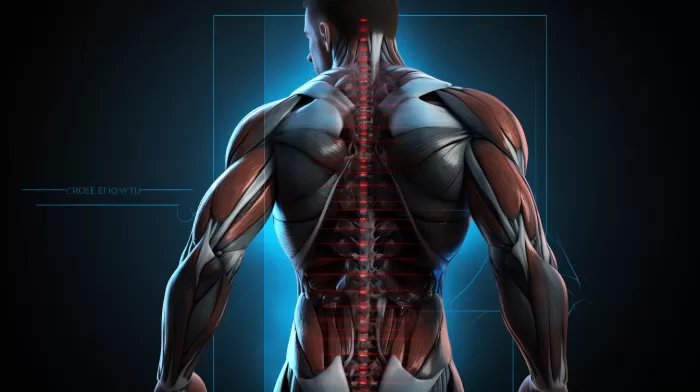Each year millions of people struggle with lower back pain. But most of this suffering is completely unnecessary. The reason this pain continues: Most of the treatments for back pain only address its symptoms. And while treating the symptoms can provide some pain relief, this relief is often only temporary. If you want lasting relief, you have to look and go deeper than just treating the symptom or even the condition.
Two Words That Keep You In Pain
If you suffer from lower back pain, or any other physical condition or injury for that matter, I am willing to bet that you have never heard the two mystery words from the mouth of your doctor, physical therapist or other healthcare provider, that are the key to solving your problem.
So what are these mystery words?
Muscle Imbalances.
See, what most people don’t realize is that lower back pain is typically a process, meaning it develops over time. And while people tend to attach their pain to a particular incident like shoveling snow, sneezing, or picking up a box, the fact is the problem has been there for months or years but you are just now aware of it because it now hurts.
Balancing Act
Over time, various muscle groups in the body become out of balance. One muscle gets stronger while the opposing muscle weakens. This imbalance pulls your bones, joints, and spine out of alignment. These muscle imbalances force the body to adjust in a dysfunctional way, placing excessive, uneven, and unnecessary strain as well as wear and tear on muscles, ligaments, tendons, bones, cartilage, and spinal discs.
While you can function with these imbalances, it usually isn’t long before the body breaks down. A good analogy is to think about your car. What happens when your steering is out of alignment? Your car pulls to one side and the tires wear down unevenly. If you don’t deal with the underlying problem, eventually the tires will have a blowout.
Well, the same is true for your body.
The real key to eliminating lower back pain — or any other ache, pain, or injury — is to start at the root of the problem. That means you need to identify and address the underlying cause, which is almost always muscle imbalances.
So if you are dealing with lower back pain, or any other condition, I suggest you make identifying your muscle imbalances your number one priority. Once you do, you’ll be on your way to lasting relief.
While this evaluation and treatment approach is extremely effective, it is not well known, so you will likely have a very hard time finding a healthcare professional that is trained in this approach. The good news is, there are simple “self-tests” you can do on your own to get a very good idea of what dysfunctions you have and the underlying muscle imbalances that have created your condition and pain.
Identifying Muscle Imbalances
To identify your muscle imbalances, you need to pay close attention to your body’s mechanics and posture. Observe how you move throughout the day and take note of any activities or habits that cause pain or discomfort. Some common indicators of muscle imbalances include:
- Poor posture, such as slouching, rounded shoulders, or forward head posture
- Difficulty standing up straight or maintaining good posture throughout the day
- Muscular pain with particular movements, like bending, twisting, or lifting
- Limited range of motion in one or more joints
- One-sided pain or discomfort in the lower back, hip, or knee
Once you identify potential muscle imbalances, you can work on correcting them through targeted strengthening and stretching exercises.
Correcting Muscle Imbalances
- Stretching – It is essential to stretch tight muscles to help bring them back into balance with their opposing muscle groups. Focus on areas where you have identified tightness or discomfort, and make sure to hold each stretch for at least 30 seconds, breathing deeply to help relax the muscles.
-
Strengthening – Strengthening weak muscles is just as important as stretching tight ones. Make sure to work on strengthening exercises for the muscles that oppose those you have identified as tight. For example, if you have tight hip flexors, focus on strengthening exercises for your glutes and hamstrings.
-
Postural Awareness and Retraining – Be mindful of your posture throughout the day, and work on maintaining proper spinal alignment at all times. This may involve adjustments to your workstation, such as raising your computer monitor, adjusting your chair height, or using a lumbar roll to help support your lower back.
-
Regular Exercise – Incorporate regular physical activity into your routine, such as walking, swimming, or yoga, to help improve your overall muscle balance and keep your body functioning optimally.
-
Professional Guidance – If your pain persists or worsens, consider working with a physical therapist, chiropractor, or other healthcare professional experienced in treating muscle imbalances. They can help assess your condition and develop a customized treatment plan to address your specific needs.
By addressing the root cause of your lower back pain – muscle imbalances – you can break free from the cycle of temporary relief and achieve lasting pain relief. Remember that patience and consistency are key when working to correct muscle imbalances. It took time for these imbalances to develop, and it will take time to retrain your body and restore proper function. Stay committed to the process, and you’ll be on your way to a healthier, pain-free life.



